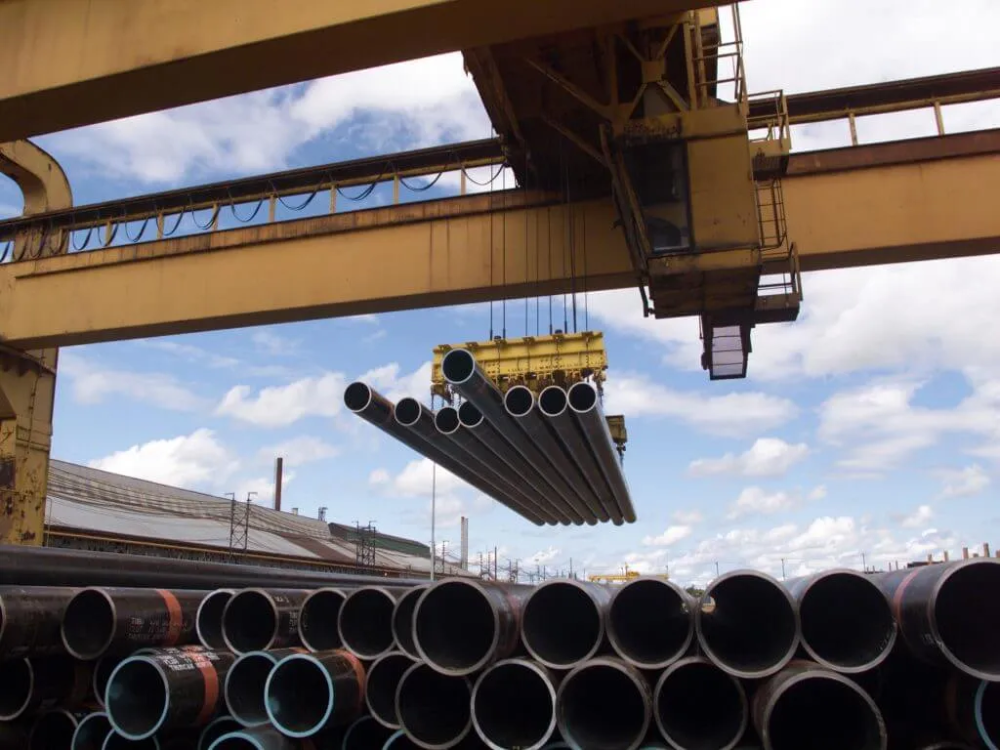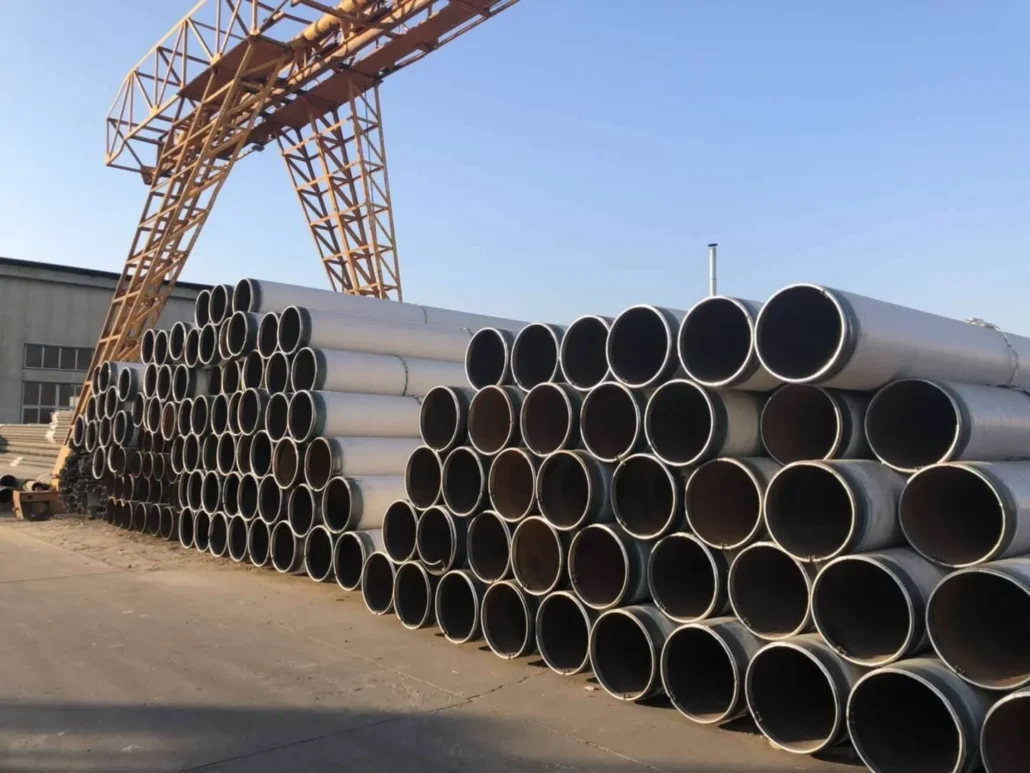
Che cos'è il tubo d'acciaio AS 1163?
AS/NZS 1163 è lo standard per i profilati cavi in acciaio saldati a freddo in Australia e Nuova Zelanda. Si applica a tutti i profilati cavi in acciaio utilizzati nelle strutture edilizie.
Lo standard prevede diversi gradi, come C250, C350, C450, ecc. Il valore del grado rappresenta la resistenza minima allo snervamento del materiale (in MPa).
I requisiti di prova di AS/NZS 1163 comprendono le modalità di taglio dei campioni per le prove di trazione e di impatto, il processo di invecchiamento, la qualità della lunghezza della sezione cava e le saldature esterne. Queste fasi contribuiscono a garantire la conformità del prodotto agli standard di qualità.
Tipi e gradi di AS 1163
AS/NZS 1163 copre una varietà di tipi e gradi, tra cui:
- Sezioni cave circolari (CHS) nei gradi C250, C250L0, C350, C350L0, C450 e C450L0
- Sezioni cave rettangolari (RHS) nei gradi C250, C250L0, C350, C350L0, C450 e C450L0
- Sezioni cave quadrate (SHS) nelle qualità C250, C250L0, C350, C350L0, C450 e C450L0
Lo standard AS 1163 prevede una serie di opzioni per requisiti strutturali di diversa resistenza. Di seguito sono riportate le caratteristiche e gli scenari applicativi di alcuni gradi chiave C250, C350 e C450.
AS 1163 C250
AS 1163 C250 ha un carico di snervamento minimo di 250 megapascal (MPa). È un materiale a basso costo, facile da lavorare e saldare, adatto a progetti con budget limitati e requisiti di resistenza ridotti.
AS 1163 C350
AS 1163 C350 è il grado più comunemente usato in AS 1163, con una resistenza allo snervamento di 350 MPa, ed è ampiamente utilizzato nelle strutture a telaio degli edifici commerciali.
AS 1163 C450
Il suo limite minimo di snervamento è di 450 MPa. Ha un'elevata resistenza e tenacità alle basse temperature e viene spesso utilizzato in strutture pesanti.
Specifica AS 1163
| Tipo | ERW (CHS), SEZIONE A FORO (CHS, RHS, SHS) |
|---|---|
| Spessore della parete | Da 1,6 mm a 16 mm |
| Dimensione | Sezioni cave tonde (CHS): 21,3 mm* 165,1 mm, sono disponibili dimensioni maggiori fino a 610 mm a seconda delle capacità del produttore. |
| Sezioni cave quadrate (SHS): 20mm*20mm - 400mm*400mm | |
| Sezioni cave rettangolari (RHS): 50 * 20 mm - 500 mm * 300 mm |
Composizioni chimiche
| Standard | Grado | Composizione chimica % max | ||||||||||
|---|---|---|---|---|---|---|---|---|---|---|---|---|
| C | Si | Mn | P | S | Cr | Mo | AI | Ti | Elementi in microlega | CE | ||
| AS/NZ 1163 | C250 | 0.12 | 0.05 | 0.5 | 0.03 | 0.03 | 0.15 | 0.1 | 0.1 | 0.04 | 0.03 | 0.25 |
| C250L0 | ||||||||||||
| C350 | 0.2 | 0.25 | 1.6 | 0.03 | 0.03 | 0.3 | 0.1 | 0.1 | 0.04 | 0.15 | 0.43 | |
| C350L0 | ||||||||||||
| C450 | 0.2 | 0.25 | 1.7 | 0.03 | 0.03 | 0.3 | 0.35 | 0.1 | 0.04 | 0.15 | 0.43 | |
| C450L0 | ||||||||||||
| ASTM A53 | B | 0.3 | – | 1.2 | 0.05 | 0.045 | 0.4 | – | – | – | – | – |
Proprietà meccaniche
| Standard | Grado | Resistenza alla trazione | Resistenza allo snervamento | Test d'impatto |
|---|---|---|---|---|
| (MPa) | (MPa) | (J) | ||
| AS/NZ 1163 | C250,C250L0 | 320 | 250 | Le prove d'urto devono essere eseguite a 0°C in conformità alla norma AS 1544.2. |
| C350, C350L0 | 430 | 350 | ||
| C450,C450L0 | 500 | 450 | ||
| ASTM A53 | B | >415 | ≥240 | - |
Processo di produzione delle sezioni cave AS 1163
Il processo di produzione dei profilati cavi AS 1163 prevede una serie di fasi accuratamente controllate per produrre profilati cavi in acciaio strutturale formati a freddo e saldati a resistenza elettrica (ERW) che soddisfano i severi requisiti della norma.
Il processo assicura che i profilati soddisfino le proprietà meccaniche, le tolleranze dimensionali e gli standard di qualità specificati in AS/NZS 1163:2016. Di seguito sono riportate le fasi dettagliate del processo di produzione.
Selezione della materia prima
Il processo inizia con la selezione di coils di acciaio di alta qualità, solitamente realizzati con acciaio a basso tenore di carbonio per soddisfare i requisiti di composizione chimica della norma AS 1163. L'acciaio deve soddisfare i limiti di carbonio equivalente (CE) previsti dalla norma.
Formatura e saldatura
L'AS 1163 utilizza la tempra a freddo per aumentare la resistenza dell'acciaio. Una volta che il nastro d'acciaio viene formato in forma tubolare, i bordi vengono uniti e saldati mediante saldatura a resistenza elettrica (ERW).
Trattamento e finitura delle superfici
I profilati cavi sono solitamente sottoposti a un trattamento superficiale di laminazione. La norma AS 1163 prevede altri trattamenti superficiali come la zincatura e il rivestimento.
Requisiti per le prove meccaniche dei tubi AS 1163

Il tubo AS/NZS 1163 deve essere sottoposto a diversi test meccanici, tra cui una prova di trazione in conformità con AS 1391, una prova di impatto a 0°C in conformità con AS 1544.2 e una prova di appiattimento a freddo.
Test di trazione
La prova di trazione viene eseguita in conformità alla norma AS 1391. La velocità di deformazione quando ci si avvicina al punto di snervamento deve rientrare nell'intervallo più alto di velocità di deformazione indicato nella norma AS 1391. Questa prova misura la forza necessaria per tirare qualcosa come una corda, un filo o una trave strutturale fino al punto di rottura.
Test d'impatto
Le prove d'urto sono eseguite a 0°C in conformità alla norma AS 1544.2. Questo test misura la resistenza del materiale a carichi ad alta velocità e serve a determinare la quantità di energia assorbita dal materiale durante la frattura. È importante per valutare la tenacità del materiale.
Test di appiattimento a freddo
La prova di appiattimento a freddo viene condotta a temperatura ambiente tra due superfici piane parallele. La saldatura si trova a 45 gradi per diametri esterni nominali inferiori o uguali a 60 mm e a 90 gradi per diametri superiori a 60 mm. Il provino viene appiattito fino a quando la distanza tra le superfici è pari a 0,75d, dove d è il diametro nominale della sezione cava circolare.
Differenza tra AS/NZS 1163 e ASTM A53 B
Sebbene sia l'AS/NZS 1163 che l'ASTM A53 B siano norme per i prodotti in acciaio, esse differiscono per ambito, applicazione, composizione chimica e proprietà meccaniche.
1. Ambito di applicazione
ASTM A53 B è una specifica standard per tubi in acciaio, neri e zincati a caldo, saldati e senza saldatura. L'AS/NZS 1163, invece, specifica i requisiti dei profilati cavi in acciaio formati a freddo per scopi strutturali.
2. Applicazione
ASTM A53 B è una specifica generale per i tubi di acciaio che copre i tubi zincati e i tubi neri. È disponibile nei tipi S (senza saldatura), E (ERW, saldatura longitudinale a resistenza elettrica) e F (saldato in forno). AS/NZS 1163 è utilizzato in una varietà di applicazioni, tra cui palificazione di tubi, fabbricazione, petrolio e gas, dissuasori, pali per insegne, perforazione di pozzi d'acqua e molte altre.
3. Composizioni chimiche
AS/NZS 1163 e ASTM A53 B hanno composizioni chimiche diverse. Ad esempio, l'AS/NZS 1163 C250 ha un contenuto massimo di carbonio di 0,12%, mentre l'ASTM A53 B ha un contenuto massimo di carbonio di 0,3%.
4. Proprietà meccaniche
Anche le proprietà meccaniche di AS/NZS 1163 e ASTM A53 B differiscono. Ad esempio, AS/NZS 1163 C250 ha una resistenza alla trazione di 320 MPa e un carico di snervamento di 250 MPa, mentre ASTM A53 B ha una resistenza alla trazione superiore a 415 MPa e un carico di snervamento di almeno 240 MPa.
